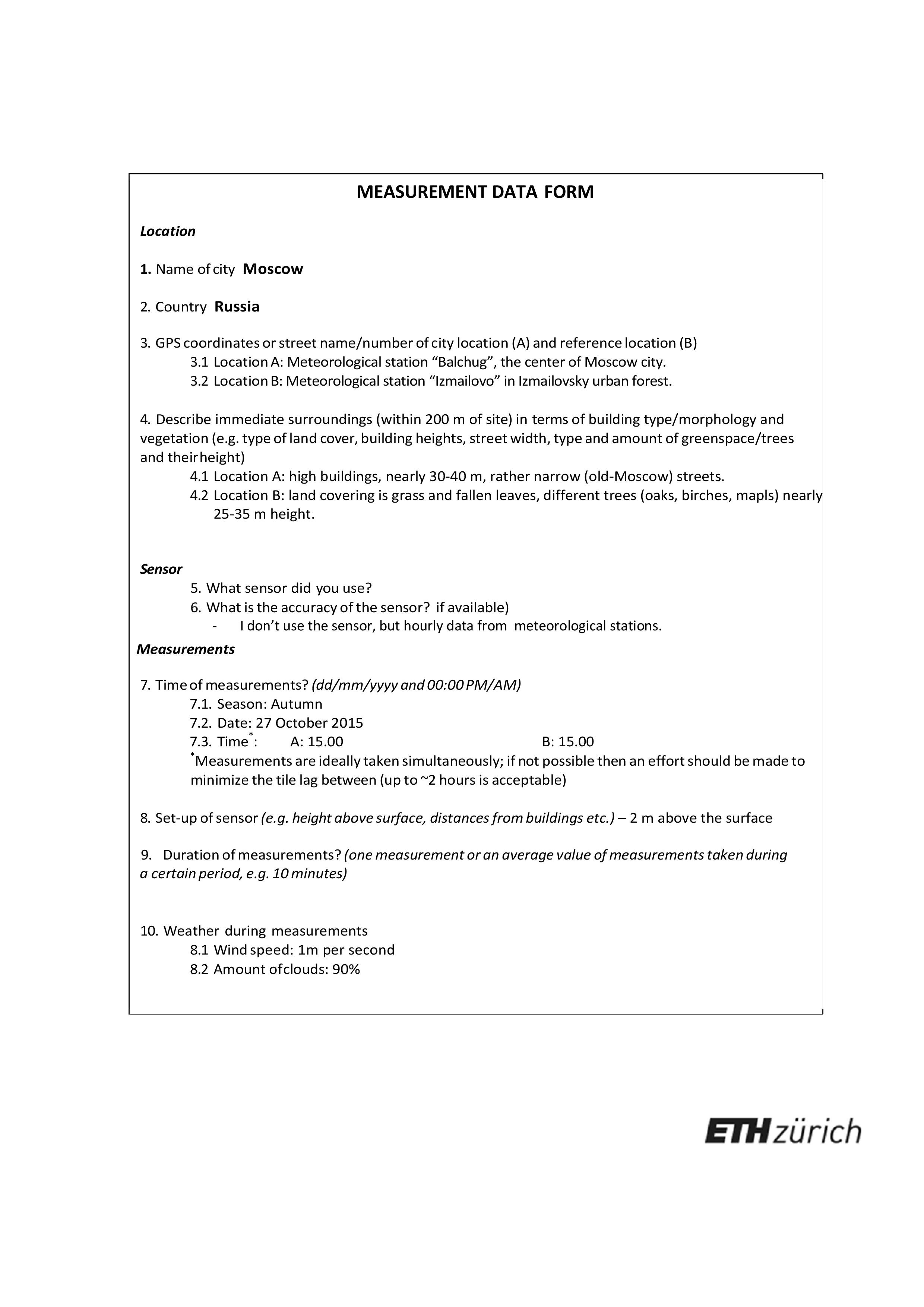
Uploaded on 2015-10-27 by RyabovaElhana
Below I sent completed Measurement Data Form. ![enter image description here][1] Temperature in location A (Moscow center) was 7C at 3p.m., and in location B (urban forest) it was 3C at the same time. So, the difference between maximum urban temperature (location A) and the reference location (location B) was 4C digree. This temperature difference is connected with: - different land cover (asphalt and stone-block covering in the center and grass and fallen leaves in the forest); - different area (high buildings and narrow streets in the center and trees in the forest). As we know building materials have high heat capacity and narrow streets slow cooling air at night, so city centers have a great possibility to store the heat. That's why we have the UHI at the city center. About the influence of the immediate surroundings I can say, that strong wind could lower the temperature difference between main and representative locations, but the wind was very weak (1 m per second) and it didn't influence strongly. Clouds block solar radiation and reduce daytime warming in cities, but today it was cloudy above both locations, so we have lower temperatures in both locations. Also tall trees with the residuary leaves could shade and cool air more strongly, aspesially in connection with cloudy weather. Can you elaborate on a number of interventions against the UHI in your city? Unfortunatelly our government doesn't interesteg in UHI, but I can suggest such interventions as: - greening the city with more parks, forests and avenues. - using "green" building technologies, such as "green" roofes and "green" walls. - and using light colours (aspessially white) in building materials to increase surface albedo. [1]: https://edxuploads.s3.amazonaws.com/1445956826353463.jpg